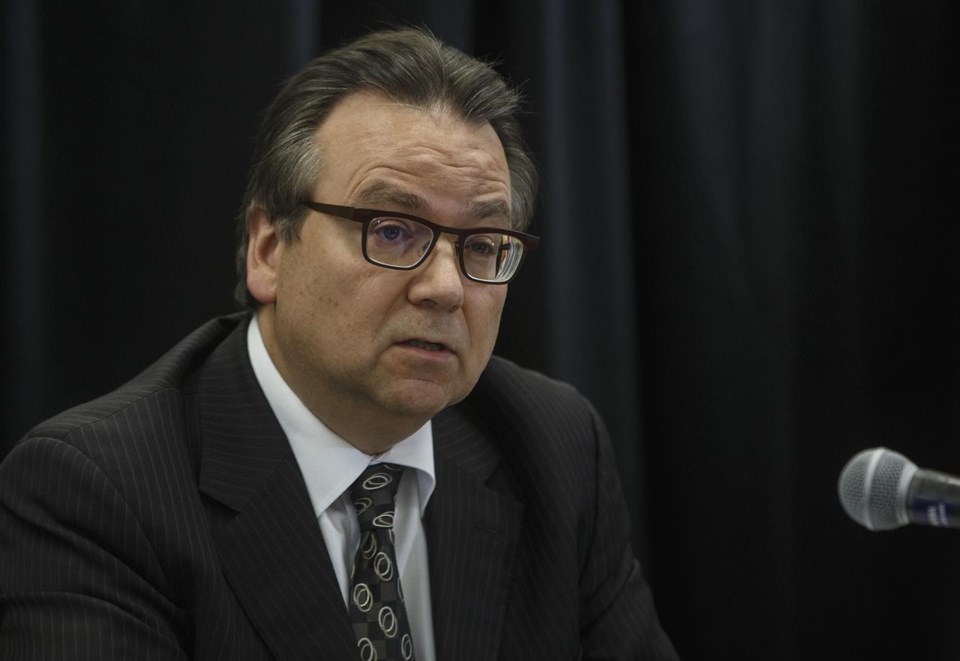EDMONTON — Alberta's system for managing environmental risks from old oilpatch facilities still hasn't spelled out how it will collect security to ensure cleanups and doesn't do enough to check that the work gets done, the province's auditor general said Thursday.
"We conclude that (the Alberta Energy Regulator) had liability management processes in place during the audit period, but not all those processes were well designed and effectively mitigating risks associated with closure of oil and gas infrastructure," said Doug Wylie's report.
The report acknowledges that the United Conservative Party government has failed to come to grips with Alberta's increasingly pressing problem of what to do with the thousands of abandoned and inactive wells and kilometres of pipeline that remain on the landscape, said University of Calgary resource law professor Martin Olszynski.
"There are obvious things that can be done and they refuse to do those things," he said.Â
Wylie acknowledged the regulator is reforming how it evaluates and ensures the cleanup of old energy sites.
However, he said that program has yet to deal with two major issues -- the so-called "legacy sites" that have been abandoned and inadequate security collected to ensure the number of such sites doesn't increase. Wylie said current programs that mandate spending on well closures may not be getting at the problem sites.
"Licensees have focused more on low-risk and lower-cost sites," Wylie wrote.
He noted that 74 per cent of reclamation certificates have been issued for sites that were never brought into production.
Wylie said the regulator should develop and release targets to ensure the public can gauge whether enough old sites are being cleaned up.
He also pointed out that Alberta still lacks timelines for operators to remediate their sites. The report contains a graph showing an increase in the number of inactive wells in the province every year since 2000 -- save for 2021, when the federal government provided $1 billion for cleanup.Â
The report emphasizes that, despite some reforms, important questions remain on how Alberta collects security from energy companies.
"We recommend that the Alberta Energy Regulator determine how much security needs to be collected, when it will be collected, and how collection will get enforced," it says.Â
The government has had three years since it began its reforms to answer those questions, said Olszynski.
"They refuse to do anything that might cost the industry money."
As well, Wylie said the regulator needs to tighten up supervision of remediation programs.Â
About 17,000 suspended wells don't comply with regulations. No process exists to ensure abandoned wells are living up to environmental standards. Automated approvals for reclaimed wells are rarely checked up on.
"We recommend that the Alberta Energy Regulator evaluate compliance assurance activities for suspended wells and routine abandonments," said the report. "(The regulator should) ensure there is evidence of review of remedial action plans."Â
Olszynski said that became a problem when the regulator was handed responsibility for enforcement as well licencing energy activity.
"It's hugely problematic," he said. "What's going on on the landscape? How are you checking?"
In its response, the government didn't indicate whether it would accept and adopt Wylie's nine recommendations.
"The auditor general’s report shows that we are making significant progress addressing the cleanup of oil and gas sites," Alberta Energy spokeswoman Gabrielle Symbalisty said in an email.Â
"We appreciate their review and recommendations about the new framework, and we will continue to work collaboratively with the (regulator) to improve the process.”
Opposition NDP energy critic Kathleen Ganley said that based on the report, Alberta's oil and gas liabilities continue to grow under the UCP after failing to provide proper oversight regarding the cleanup of wells.
“Rather than properly addressing the growing liabilities from oil and gas infrastructure, the UCP plans to give away up to $20 billion in royalty credits to profitable companies to clean up their wells — something they are already legally required to do," she said in a statement.
“This failure to address these growing liabilities ... is damaging to our energy industry’s reputation. It shows the UCP can’t be trusted to manage the industry or protect Alberta taxpayers."
Olszynski said the audit shows Alberta has a problem.Â
"This is not bureaucratic incompetence. The regulator is captured (by industry)."Â
This report by The Canadian Press was first published March 23, 2023.
Bob Weber, The Canadian Press




